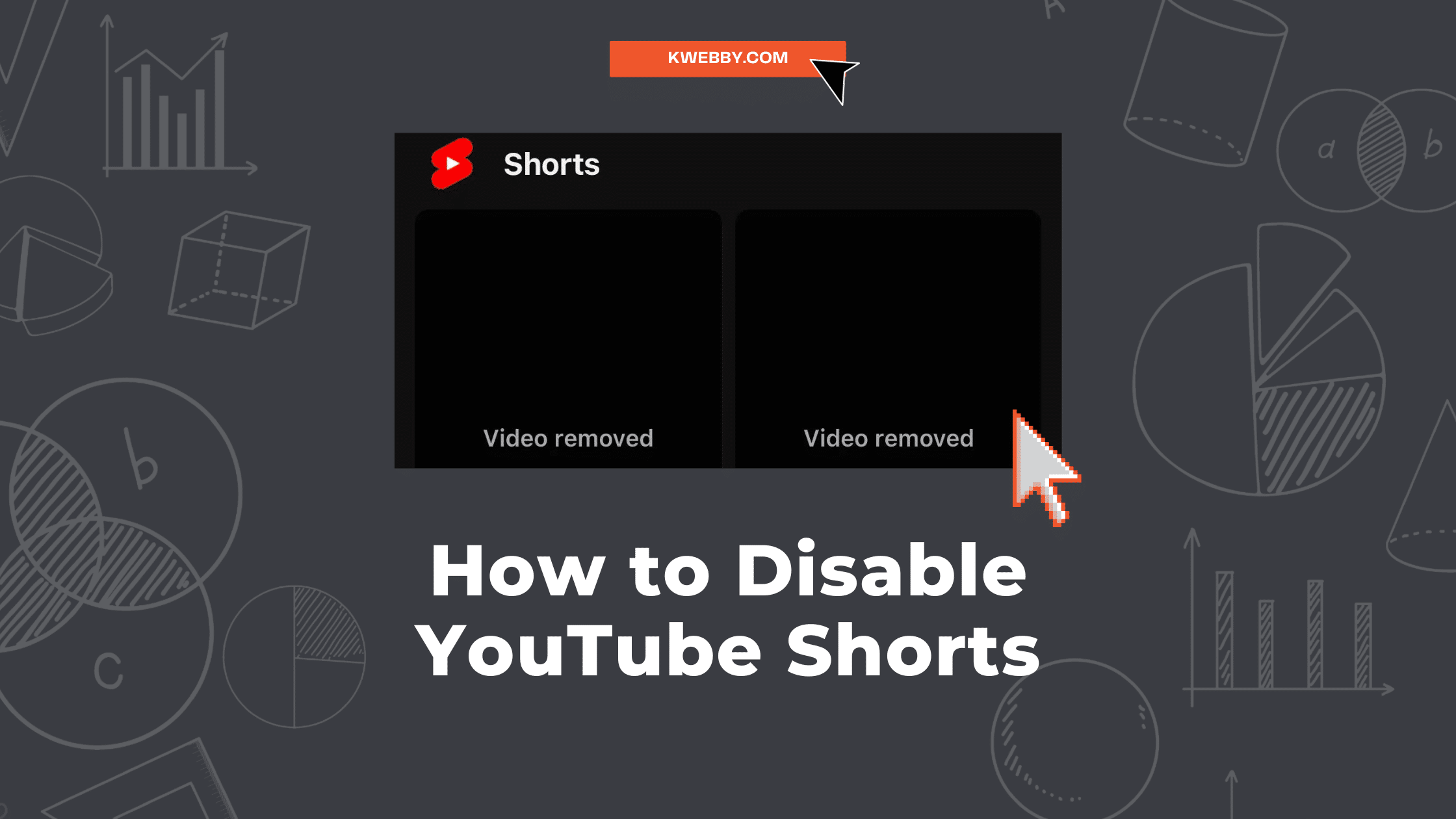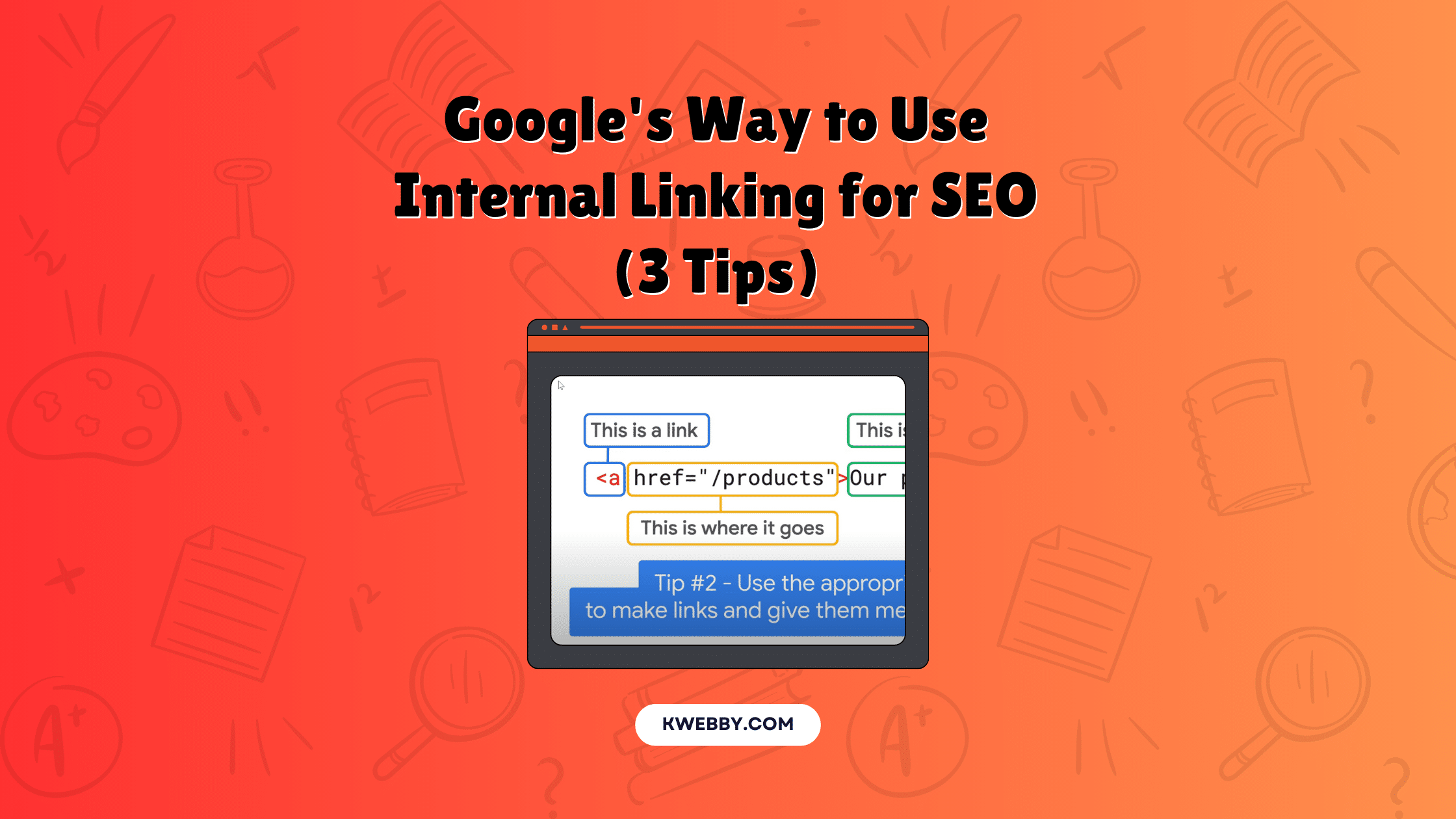Home / Blog / SEO / Advanced SEO Techniques / The Surprising Impact of Internal Linking on SEO: 4 Positive Benefits You Can’t Ignore
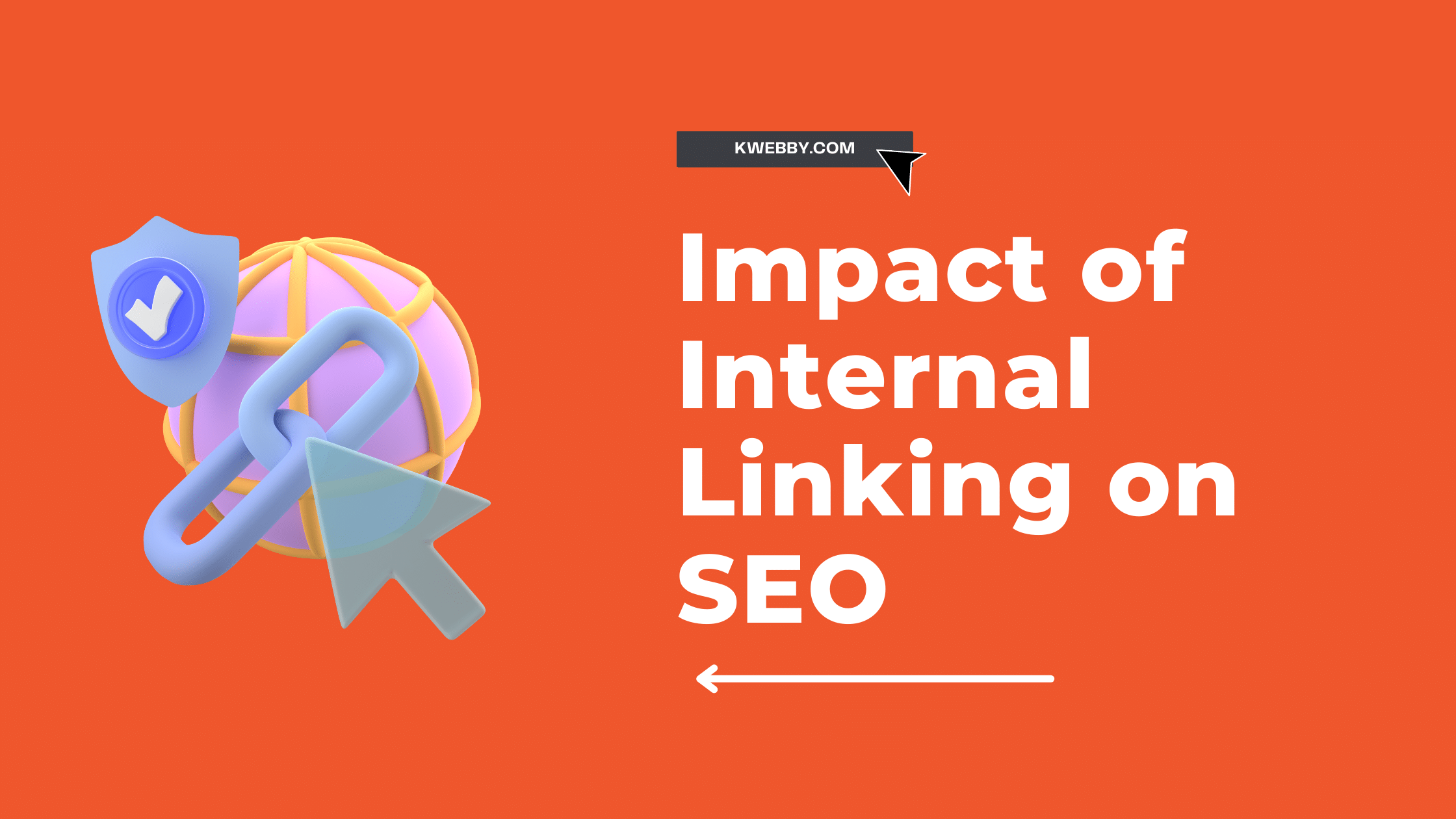
The Surprising Impact of Internal Linking on SEO: 4 Positive Benefits You Can’t Ignore
Choose Your Language:
Search Engine Optimization (SEO) is an essential element in any successful digital marketing strategy.
Internal linking, the practice of providing links from one page to another on a website, can be a powerful SEO tool for businesses seeking to drive more traffic and increase visibility with their target audiences.
This article will explore the various benefits of internal linking for SEO.
Internal linking provides numerous advantages when it comes to search engine optimization.
By strategically interlinking pages related to certain topics or keywords, websites are able to create an organized structure that clearly demonstrates content relevance and topical authority.
This allows search engines like Google, Bing and Yahoo! to quickly identify relevant information and rank sites higher in organic search results.
Additionally, internal links allow web users to easily navigate through different site sections while increasing overall engagement rates.
Finally, leveraging internal link-building techniques can help businesses gain an edge over competitors by boosting keyword rankings across multiple pages at once – significantly expanding reach potential without sacrificing quality or relevancy.
When implemented correctly, internal links provide invaluable support for companies striving for improved performance within the SERPs.
With this in mind, let us further detail how internal linking can benefit SEO efforts.
What Is Internal Linking?
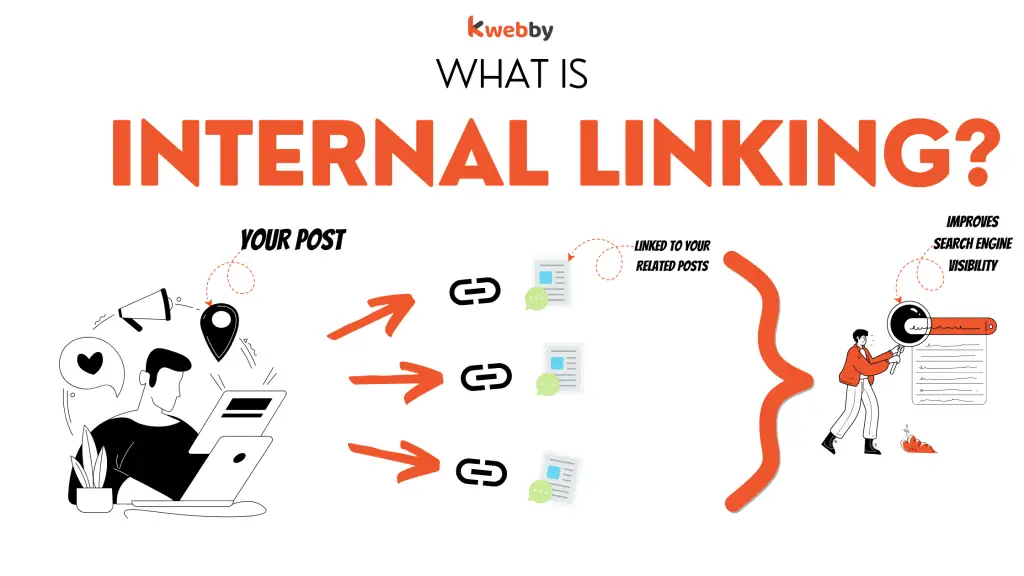
Internal linking is an essential part of a successful SEO strategy. It involves adding links from one page on your website to another, allowing readers and search engine crawlers to navigate through the content easily.
Internal links can provide contextual information about topics and related content within the same domain. They also increase user engagement by redirecting visitors from one page to another or from external sources to your web pages.
For example, the following is Internal link to one of our pages.
How to Report Black Hat SEO to Google in 2023
When optimizing for search engines, internal links play an important role in how often a particular web page appears in SERP results.
This is because they help with crawling and indexing and passing link equity between pages inside the site itself.
Also learn, How To Add Internal Links In WordPress Automatically in 1 Click
By using relevant keywords when creating internal links, you can influence the ranking of various pages within your website without relying solely on external sources like backlinks.
The power of internal linking lies in its ability to make navigation easier while providing more context around certain topics – both benefit users and search engine bots seeking quality content online.
Benefits Of Internal Linking For Seo

Internal linking is a powerful SEO technique that can benefit website owners.
By creating relevant links between pages within the same website, internal linking allows search engines to crawl and index content on the site more, as well as helping distribute link equity throughout the domain.
And, yes. It’s something where internal linking is super critical for SEO. I think it’s one of the biggest things you can do on a website to guide Google and visitors to the pages that you think are important. And what you think is important is totally up to you.
Link equity refers to the ‘link juice’ or ‘link value’ associated with each page of content, which in turn helps improve overall rankings.

When done correctly, internal linking helps create a stronger foundation for improving organic visibility by allowing users to quickly find related topics and providing additional context when consuming content.
This includes everything from backlinking popular posts to connecting product categories.
In addition, strategically placed relevant internal links help keep visitors engaged while also increasing time spent onsite – two factors known to impact overall rankings positively.
Moreover, optimizing existing content by adding relevant internal links not only provides extra information but helps build relationships between individual pieces of content – making it easier for search engine algorithms like Google’s RankBrain AI algorithm to accurately categorize and understand what those articles are about.
As such, using this type of optimization strategy should be an integral part of any comprehensive SEO plan moving forward.
Through proper use of internal linking webmasters can ensure their websites are accessible and engaging enough for both humans and machines alike.
How To Create An Internal Link Structure
Creating an effective internal link structure for your website can help you get the most out of your SEO efforts. Here are some tips on how to do so:
- Add Internal Links: When creating content, make sure to use relevant internal links pointing from one page to another within the same site or another page in order to drive traffic and improve user experience.
- Site Architecture: Your website’s overall architecture needs to be well thought-out as it plays a major role in building up good internal links. Make sure all pages have clear navigation paths with easy access between them using relevant keywords and descriptive anchor text.
- Nofollow Links: It is essential to include ‘nofollow’ tags in any external links you add as they will not contribute towards increasing your search engine rankings, but still help visitors find related content on other websites quickly and easily.
Internal linking is more than just providing additional resources for readers to explore – when done correctly, it can significantly boost your SEO performance by improving visibility and driving organic traffic.
By following these guidelines, you can ensure that all of your website’s internal links point users in the right direction while helping optimize crawling and indexing across multiple devices and browsers.
Good practices for optimizing your internal links will now be discussed next.
Below is the code sample for your content;
<a href="http://www.yourdomain.com/related-content">Related Content</a>
How to Add Internal Links on WordPress?
You can add Internal links on WordPress easily by selecting text on your blog and selecting link icon below;

Next, A new popup box will open and there you need to search for related blog posts by typing the keyword name below and selecting any of them from the lists;
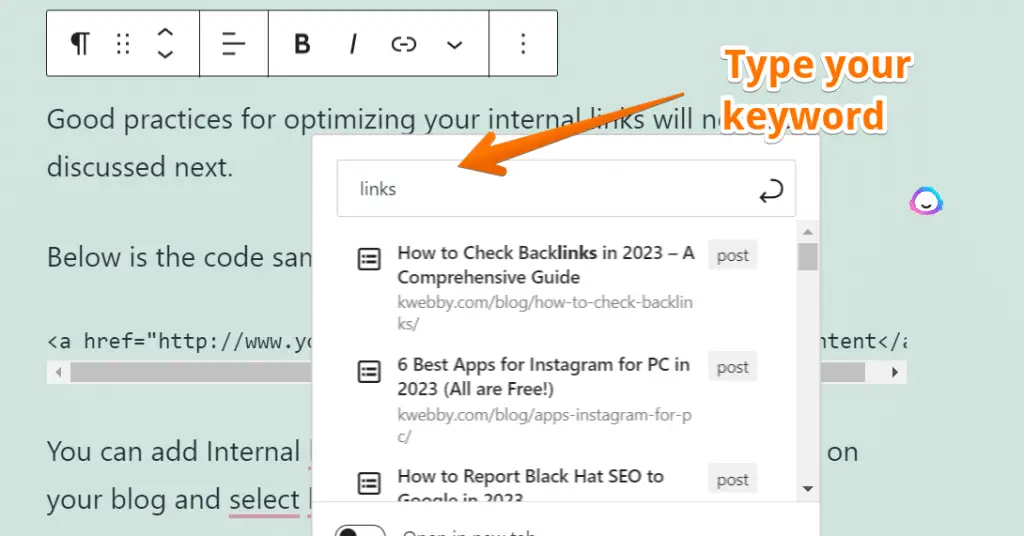
Good Practices For Optimizing Your Internal Links
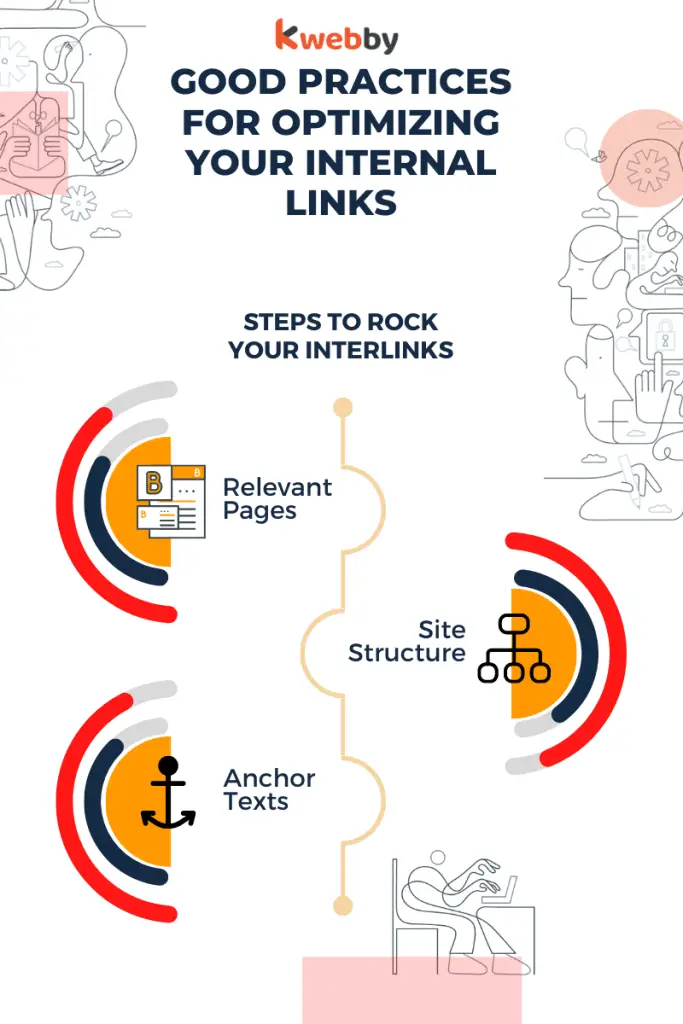
Internal linking is an essential part of SEO, as it helps search engines understand the structure of your website and how pages relate to each other.
It also allows users to easily navigate through your site, which can help improve user experience and reduce bounce rate. To optimize internal links for SEO purposes, some important best practices should be followed.
The first practice is creating relevant internal links on pages with similar topics. This will allow search engine crawlers to understand the relevance between these pages better, allowing them to rank higher in their respective searches.
Additionally, this ensures visitors clearly understand what each page contains so they can more effectively navigate throughout your site.
| Good Practices | Benefits | Examples |
|---|---|---|
| Relevant Pages | Improved ranking & user navigation | Linking from one blog post about summer activities to another related blog post about beach safety tips |
| Site Structure | Easier for bots to crawl & index webpages correctly | Creating categories or tags which logically group together related content pieces; using breadcrumbs to show link hierarchy within the website structure |
| Creating Internal Links Anchor Texts | More accurately describes what’s included on linked-to page and improves the crawling/ranking ability | Using descriptive anchor texts such as “check out our guide on How To Choose The Right Running Shoes” instead of generic phrases like: “click here!” or “learn more” |
By following these good practices while optimizing internal links, businesses can ensure they reap all potential benefits associated with strategic internal linking – improved rankings due to better crawling by bots and improved user navigability while browsing the website.
Strategic anchor text usage in internal linking can further enhance the effectiveness of these efforts by helping Googlebot better comprehend contextually what’s contained on each page being linked too, thus improving overall visibility within SERPs (Search Engine Results Pages).
Strategic Anchor Text Usage In Internal Linking
“A stitch in time saves nine.” Strategic anchor text usage is essential for a successful internal linking strategy, as it can have a direct impact on the success of your SEO campaign.
Internal links are the backbone of any website’s structure and adding them strategically can improve user experience while also improving search engine rankings.
Here are five tips to help you create an effective internal linking strategy:
- Use descriptive anchor texts – Descriptive anchor texts give users more context about what they are clicking through to. They should clearly explain where the link leads without being too long or cumbersome. For example, instead of using ‘click here’ as your hyperlink, use something like ‘learn more about our services here’.
- Link relevant pages together – When creating internal links, make sure that those webpages are related in some way so that there is continuity between different sections of your site. This will provide visitors with a better overall user experience and encourage them to explore further within your website and its content.
- Create a clear hierarchy -By structuring and organizing your website into categories and subcategories, you can ensure that all related information has been linked correctly from one page to another for easy navigation. This helps both search engines and users find their desired destination quickly and easily.
- Utilize breadcrumbs -Breadcrumbs allow users to navigate back up through previous levels of a website by following a hierarchical trail (e.g., Home > Services > Web Design). As such, they are great tools for providing an additional layer of organization and allowing visitors to retrace their steps if needed.
- Keep external links separate -External links should be kept far away from internal ones in order to avoid confusing users who might mistakenly click on them when trying to get around on your website. Additionally, this helps Google understand which parts of your website should be indexed and which shouldn’t be included in its search results at all times!
When done right, strategic anchor text usage allows websites to leverage the power of internal linking for improved SEO performance across multiple domains including ranking higher in SERPs (Search Engine Results Pages), increased organic traffic growth, reduced bounce rate etc..
With careful consideration given towards keyword selection when crafting descriptive anchor texts coupled with well-structured hierarchies aiding overall navigational flow;
businesses can optimize their webpages for greater visibility along with enhancing user engagement levels simultaneously
The Role Of Meta Tags And Canonical Urls In Internal Linking
Streamlining strategy and significantly strengthening structure, meta tags and canonical URLs are essential elements of effective internal linking.
Meta tags provide search engines with brief descriptions of content on a webpage that enable them to more easily identify the topic discussed in order to rank it properly.
When implemented as part of an internal link structure, they can help increase relevance for users searching for related topics.
Canonical URLs indicate which version of a given page should be indexed by web crawlers when there is multiple pages containing similar content. Having this information helps ensure searchers find the most relevant and up-to-date material available online.
In addition to these two components, using appropriate internal linking strategies such as crosslinking between different sections or categories within a website and strategically placing links pointing back to your homepage also support SEO efforts.
Following best practices like ensuring all links lead to quality content furthers optimization results while also providing greater value to visitors.
Ultimately, combining meta tags, canonical URLs and other techniques into cohesive internal linking plans help business owners unlock their websites’ full potential.
Structuring Your Content With Relevant Links
Internal linking is an important SEO strategy that should be incorporated into your website.
It helps to build a strong internal link structure and also provides additional benefits such as increased page views, improved user experience, and better search engine visibility.
By using multiple internal links throughout your site, you can create a consistent flow of traffic between pages and improve the overall usability of your website.
Adding relevant links to each page on your website can help search engines understand how all the links are related to one another.
When creating these links, it’s best to use exact match anchor text—a keyword or phrase that accurately describes the destination page—for optimal results.

Additionally, make sure to include dofollow internal links, which allow search engine bots to crawl through your content more quickly for indexing purposes.
Creating an effective internal linking structure requires careful planning and thoughtfulness in order to achieve maximum benefit from this SEO technique.
Allowing users access to other areas of your website via thoughtful navigation options encourages them to stay longer and explore more content while they are there.
To optimize the effectiveness of your internal linking structure, ensure that all key pages have at least two incoming links from other parts of the site; this will increase the number of visits each page receives and keep users engaged with what you have to offer.
Measuring The Effectiveness Of Your Internal Link-Building Strategy
Internal links are a powerful tool for SEO and can be used to great effect in order to improve the rankings of your website on Google.
Internal linking is essential for establishing an effective site structure, which helps search engine crawlers understand how content is organized within your domain.
By using internal links strategically, you can direct users and bots alike towards specific pages that contain relevant information or targeted keywords.
It’s also important to regularly check broken internal links so as not to hinder user experience or affect ranking potential.
Internal Links with Google Search Console
Google Search Console provides useful tools for measuring the effectiveness of internal link building strategies by allowing webmasters to analyze data related to their own domains.
Go to Your Google Search Console, Select your Property and “Links” menu from the left bottom sidebar;
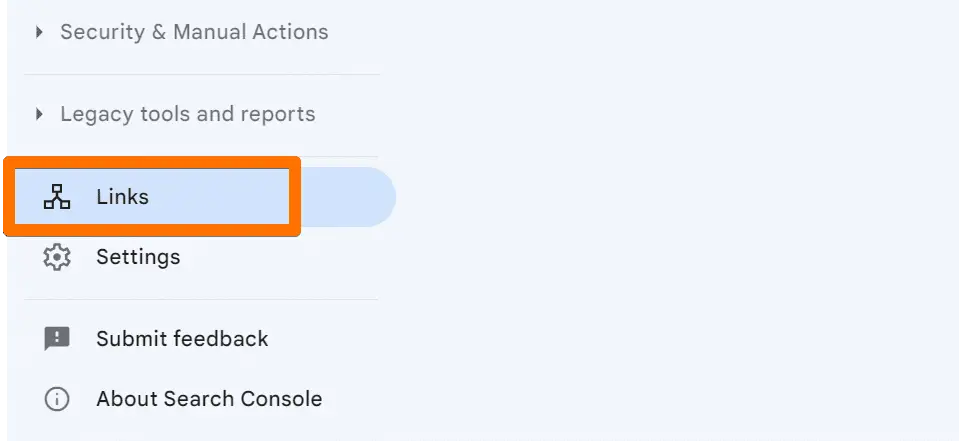
Then on the right side, you will see the Internal links structure of your website as below;
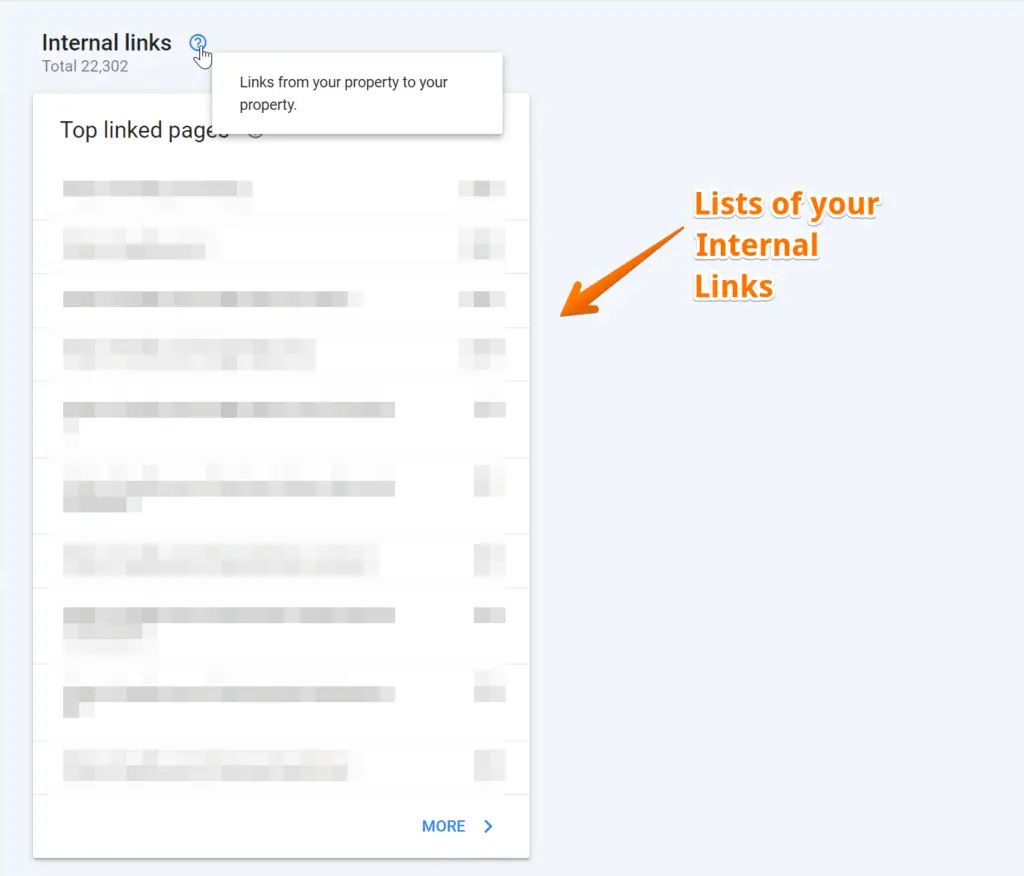
Now just select any page from the lists and you will find all internal links.
Through this platform, one can track the number of clicks received from other websites onto landing pages with certain URLs, as well as monitor click-through rates (CTR) from all sources including same domain searches.
Additionally, it allows SEO professionals to gain insights into keyword research trends based on organic traffic numbers linked directly to those particular terms associated with different sections of your website.
Aside from tracking CTRs, another way of gauging whether or not your internal link strategy has been successful involves looking at SERP features like Featured Snippets and Site Links – both help boost visibility when people perform searches on Google.
To do this effectively requires ongoing monitoring and analysis across multiple devices while keeping abreast of current best practices in regards to keyword targeting and optimizing page titles accordingly.
Doing so will ensure that users are presented with more meaningful results whenever they query something related to what your organization offers online.
Transitioning seamlessly into the subsequent section about Breadcrumbs improving user experience and SEO performance, these navigational aids allow visitors to easily access different parts of a website quickly and efficiently without having to manually scroll through various webpages for what they’re seeking out – leading them closer toward desired conversions along the customer journey path ultimately resulting in improved overall engagement metrics..
Using Breadcrumbs To Improve User Experience And Seo Performance
Breadcrumbs are an effective way to improve the user experience on a website and enhance SEO performance.
They provide contextual information about the current page, help users find their way back if they go off track, and can give search engines insight into the structure of your site.
Additionally, breadcrumbs are great for internal linking purposes as they allow you to link two pages together without having to create more links in the footer or sidebar.
| Advantages | Disadvantages |
|---|---|
| Help with navigation | Too many paths can be confusing |
| Assist search engine indexing | Can look cluttered when too long |
| Link orphaned pages easily | Not supported by all browsers/devices |
The advantages of using breadcrumbs far outweigh any disadvantages because it helps ensure that search engines properly index your website’s structure while providing helpful navigational cues to visitors.
Moreover, they offer a convenient way to link related content such as blog posts and products together without creating additional links in other parts of your site.
When used correctly, breadcrumbs can have a positive effect on both usability and SEO performance.
To get started with implementing them, take advantage of Google’s Links Report tool which will generate an analysis of your existing internal linking strategy.
This report will inform decisions about how best to optimize your website structure through optimizing the usage of breadcrumb trails. By understanding how these trails work, you will be able to achieve better results from an internal linking campaign quickly and efficiently.
Strategies For Maximizing The Reach Of Your Content Through Internal Linking
When it comes to SEO, internal links are the key to success. They help search engine crawlers navigate through your website and discover new content quickly, leading to improved rankings.
But how can you maximize their reach? By leveraging best practices when setting up internal link structures and implementing them strategically throughout your content. Here’s a quick guide on three strategies for getting the most out of your internal linking:
- Use Keywords Strategically – Incorporate keywords into anchor text whenever possible. This will help search engines understand the topic of linked pages more easily and give readers helpful context about the destination page they’re clicking on. When selecting keywords, consider not only what you want to rank for but also what terms users might actually type in when searching for information related to that topic.
- Utilize Siloing Techniques – Grouping similar topics together allows crawlers to better understand the structure of your site, as well as providing visitors with an easy way to find relevant information within each section or category. Try grouping blog posts by subject matter or product types if applicable so that customers can drill down and find exactly what interests them faster than ever before. This technique is especially effective when combined with keyword-rich anchors – just be sure not to overdo it!
- Monitor Link Quality & Frequency – It’s important to keep track of both incoming and outgoing links from all sources (including social media) in order to stay ahead of any potential penalties caused by spammy links or excessive cross-linking between sites/pages owned by you or other parties. Aim for no fewer than two internal links per post; however, don’t go overboard either as too many could lead Google or other search engines viewing this as manipulation rather than natural growth which may result in negative consequences like reduced SERP visibility or even manual action taken against your website or domain name.
By following these three simple steps, you can ensure maximum reach for your content through effective use of internal linking techniques while keeping search engine algorithms happy at the same time!
Use Surfer SEO Grow Flow to Improve Internal Linking
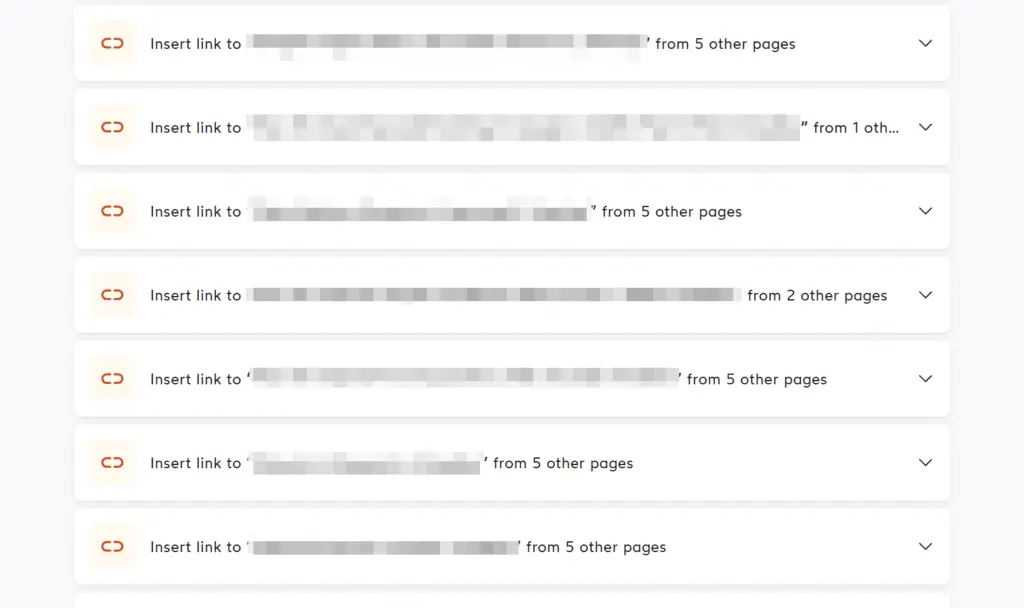
Surfer SEO Grow Flow is a powerful tool that helps marketers and SEO professionals easily create and optimize their internal link structure in order to increase user engagement, boost organic search rankings, and improve overall website performance.
You can check the detailed Step-by-step Instructions on how to use Surfer SEO Grow Flow for Internal Linking in our Surfer SEO Review here.
With strategic implementation, proper monitoring and maintenance, you can leverage the power of SEO-friendly internal links without worry of being penalized for unnatural optimization tactics.
Leveraging Social Media Platforms For Boosting Seo Through Internal Links
Social media platforms can be used to leverage internal link structure for SEO success.
When a website has an active presence on social media, it allows the website owner to interact with potential customers and followers, as well as broadcast content more freely.
This creates opportunities to embed links within posts that lead back to certain pages on the site.
For example, if a company is promoting a product or service page, they could post about it across their various social channels and include an internal link in the post that redirects users directly to the desired page on their site.
Doing this also increases visibility of those pages through organic search results since these kinds of user interactions are taken into account by search engine algorithms when ranking webpages.
Additionally, using social media for internal linking purposes helps drive traffic from different sources towards certain parts of a website.
By actively engaging with followers and regularly sharing new content related to products/services offered by a business, there’s increased chances for them to click through embedded links and visit specific destination pages within the site itself.
Not only does this increase overall clicks but also sends quality signals to search engines regarding which pages should rank higher in SERPs due to user engagement behaviors like clicking-through rates (CTR).
Thus leveraging social media platforms provides numerous benefits for boosting SEO through internal links.
Analyzing competitor strategies for improving one’s own internal link structure is essential in order to take advantage of all possible optimization opportunities available online today.
Analyzing Competitor Strategies For Improving Your Internal Link Structure
Analyzing competitor strategies to improve your own internal link structure is an essential step in any successful SEO campaign.
By taking a close look at how competitors are structuring their content, you can gain valuable insight into the most effective ways of creating an optimized internal linking system for your website.
Competitor analysis can help identify opportunities such as keywords and phrases that may have been overlooked or improperly used by rivals. It also provides an opportunity to observe structural patterns that could be applied on your site with enhancements.
For example, if a rival’s navigation menu includes more main categories than yours, it might be worthwhile to consider adding additional pages with relevant information about services or products.
Additionally, it’s important to note which external links appear high up in the hierarchy of each page – this will give you clues as to what topics and sources are being given priority by other websites in the same niche.
Analysing competitors’ structures gives you a better understanding of how they are optimizing their websites for search engine crawlers, giving you ideas on how to do similarly with your own site without having to start from scratch.
With careful observation and some experimentation, you can adjust the link flow around your webpages accordingly so that users stay engaged while facilitating higher rankings within search engine results pages (SERPs).
All these efforts should result in improved user experience and visibility online when done correctly — ultimately leading towards increased organic traffic and conversions over time.
Frequently Asked Questions
What Is The Difference Between Internal And External Linking?
Internal and external linking are two fundamental components of search engine optimization (SEO). Internal links connect webpages on the same domain while external links link to pages outside the domain.
Each type of link offers distinct advantages for SEO, so understanding how they work is essential for website owners wanting to improve their ranking in SERPs.
Internally linking webpages can help direct visitors to other related content as well as keep them longer on a site, both increasing click-throughs and reducing bounce rates.
It also helps major search engines like Google understand what each page is about by providing context between subpages within a website’s structure.
Furthermore, internal linking allows websites to pass equity from one page to another, helping boost rankings further up in SERPs.
External links play an important role too; they provide validation that your content is useful, trustworthy and worth reading.
This can be achieved through backlinks: when other authoritative sites link out to yours – demonstrating its relevance which may increase its visibility. External links encourage social sharing leading to more traffic and potentially higher conversions.
Additionally, it gives you the opportunity to build relationships with industry influencers who have already built trust among their audiences.
In order to maximize SEO benefits, it’s crucial that website owners balance the use of both internal and external links strategically throughout their online presence.
Utilizing these techniques together can open new possibilities for improving organic reach and driving longterm success for business objectives.
How Often Should I Update My Internal Link Structure?
Updating your internal link structure is a crucial part of any SEO strategy, much like the well-oiled cogs in a machine that turn to produce an efficient result.
This can be especially beneficial when it comes to optimizing search engine rankings and improving user experience. Knowing how often you should update your internal link structure can make all the difference between success and failure for your website or blog.
It’s important to understand why updating your internal links is so important and what benefits it offers.
Internal linking helps direct users around a site, allowing them to quickly find content they may be looking for without having to manually search through pages on their own.
It also gives web crawlers a better understanding of the hierarchy of pages within the website – making indexing easier as well as helping search engines rank individual pages more accurately.
Additionally, internal link building passes ‘link juice’ from page to page – enabling higher ranking results across multiple pages on the same domain.
Knowing exactly how often you need to update your internal link structure depends largely on factors such as how frequently new content is added – if this happens regularly, then it would be wise to review, assess and adjust accordingly at least once every month or two.
You could also consider using certain tools designed specifically for this purpose which scan websites and highlight potential errors or issues with URLs or anchor text used in existing links.
Taking these steps will ultimately ensure that both users and search engines have easy access to all relevant information while navigating your website or blog – something which should form part of any successful SEO strategy today!
What Is The Best Way To Choose Anchor Text For Internal Links?
Anchor text is an important element of internal linking in terms of optimizing SEO. Anchor text can be used to provide context, improve user experience and determine relevance within the search engine algorithm. The best way to choose anchor text for internal links depends on a variety of factors such as:
- The content being linked
- Keyword density
- Relevance to the topic at hand
- Overall link structure
When it comes to choosing anchor text for internal links, relevant keywords should always be considered.
Keywords that are related to the target page’s content should be chosen whenever possible; this will help ensure that Google understands what each page is about so it can better rank them accordingly.
Additionally, using keyword phrases instead of single words will also help increase relevancy and rankings in SERPs (search engine result pages).
It’s important to make sure there is no overuse of keyword phrases as this could have a negative effect on your overall SEO efforts.
In addition to relevant keywords, other elements like link structure and user experience must also be taken into consideration when choosing anchor text for internal links.
Link structure refers to how the various pages on a website are interconnected with one another through hyperlinks or “backlinks” from external websites.
This helps create organic traffic while providing users with an intuitive navigation system which can lead them directly where they need to go without having to manually type out URLs or use cumbersome dropdown menus.
Finally, improving user experience by making sure anchor texts are descriptive enough so readers know exactly what they’re clicking on before committing themselves is essential for both SEO optimization and customer satisfaction purposes alike.
By taking all these aspects into account when selecting anchor text for internal links, businesses will not only reap the rewards of increased visibility but their customers will benefit from improved usability too.
As long as quality guidelines are followed and keyword stuffing avoided, any business can take advantage of this powerful tool – helping grow their online presence significantly.
How Do I Track The Success Of My Internal Link Building Strategy?
Internal link building is a key element of any successful SEO strategy. While it can be time consuming to track the success of this process, doing so will help ensure that your efforts are yielding measurable results.
For those who want to optimize their internal linking structure and maximize its benefits, tracking the performance of these links is essential.
There are several ways to measure the effectiveness of an internal link building campaign.
Analyzing clicks on each individual link as well as total pageviews for linked pages can provide insights into user engagement with content and which strategies work best in terms of driving traffic to specific pages or posts.
Additionally, by monitoring backlinks within the same website, you can see how many other websites are linking back to yours, providing further evidence for effective link building campaigns.
Finally, keeping tabs on search engine rankings should also form part of your overall evaluation plan.
By observing how different keywords rank over time after implementing certain changes such as adding more internal links or altering anchor text, you can gain valuable insight into what works and what doesn’t when it comes to improving organic visibility online.
Tracking all these metrics in tandem allows businesses to build an accurate picture of their current link building practices and make adjustments accordingly in order to achieve desired goals from their SEO endeavours.
Can Internal Links Help With My Website’S Ranking On Search Engines?
Internal links are a fundamental part of SEO success. By strategically linking to related content on your website, you can create an efficient and effective pathway for search engine spiders to follow when crawling your site.
This allows them to effectively index all the pages in their database, which can positively affect rankings over time.
When constructing internal link building strategies, there are several factors that need to be taken into consideration.
The anchor text used should accurately reflect the page it is associated with in order for crawlers to understand what type of content is available at that link.
In addition, internal links should be placed in relevant and useful locations throughout the webpage where they will not disrupt user experience or look unnatural.
At its core, internal linking helps direct search engine algorithms towards specific sections of a website while giving users easy access to more information about topics they may find interesting.
As such, this kind of linking can have a positive effect on ranking because it demonstrates relevance and authority within a certain topic area or keyword phrase.
When done correctly, it also creates an engaging experience by providing additional resources on related topics without forcing users away from the original page they landed on.
Overall, using internal links as part of an overall SEO strategy is essential for any business looking to increase visibility online.
Through thoughtful implementation and ongoing monitoring, businesses can gain organic traffic through improved rankings resulting from strong internal linking practices.
Conclusion
Internal links are an essential part of a successful SEO strategy. They provide structure to website navigation and enable users to quickly access relevant pages or content within the same domain. The right internal link building approach can boost crawling and indexing, increase user engagement and even help websites rank higher on search engine result pages.
When creating an internal linking strategy, it is important to update the link structure regularly and choose anchor text carefully. To track success over time, consider using analytics tools to gauge page views and other key metrics. Ultimately, when done correctly, internal linking can be one of the most powerful SEO tactics for improving organic traffic and rankings.
In conclusion, with thoughtful implementation and regular maintenance, internal links can significantly improve both user experience and overall website visibility in search engine results – making them invaluable for any SEO campaign. By utilizing this technique as part of their digital marketing efforts, businesses will benefit from increased web presence that leads to enhanced brand awareness and better conversions rates in the long run.
Test your knowledge
Take a quick 5-question quiz based on this page.



